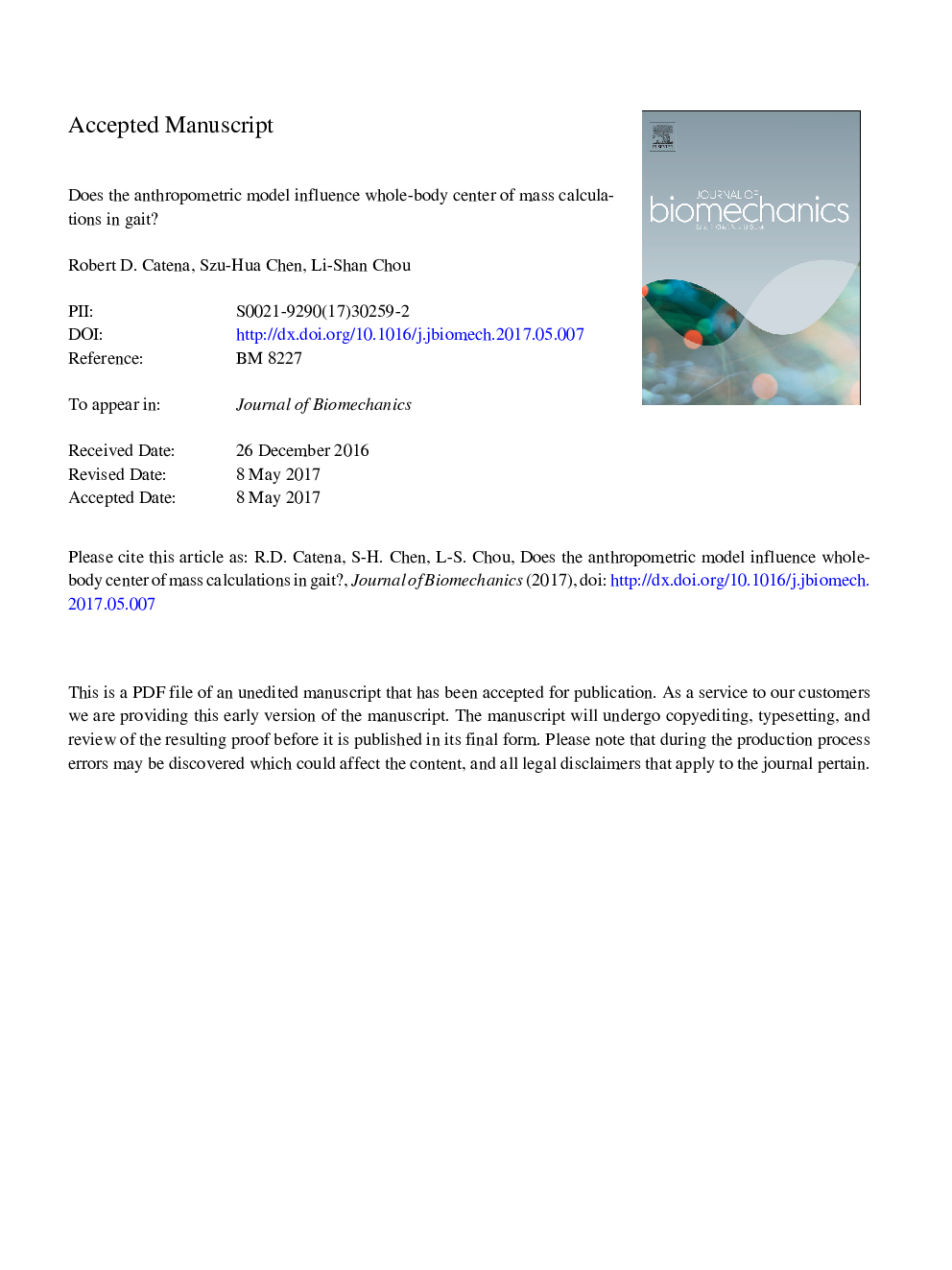| Article ID | Journal | Published Year | Pages | File Type |
|---|---|---|---|---|
| 5032254 | Journal of Biomechanics | 2017 | 25 Pages |
Abstract
Examining whole-body center of mass (COM) motion is one of method being used to quantify dynamic balance and energy during gait. One common method for estimating the COM position is to apply an anthropometric model to a marker set and calculate the weighted sum from known segmental COM positions. Several anthropometric models are available to perform such a calculation. However, to date there has been no study of how the anthropometric model affects whole-body COM calculations during gait. This information is pertinent to researchers because the choice of anthropometric model may influence gait research findings and currently the trend is to consistently use a single model. In this study we analyzed a single stride of gait data from 103 young adult participants. We compared the whole-body COM motion calculated from 4 different anthropometric models (Plagenhoef et al., 1983; Winter, 1990; de Leva, 1996; Pavol et al., 2002). We found that anterior-posterior motion calculations are relatively unaffected by the anthropometric model. However, medial-lateral and vertical motions are significantly affected by the use of different anthropometric models. Our findings suggest that the researcher carefully choose an anthropometric model to fit their study populations when interested in medial-lateral or vertical motions of the COM. Our data can provide researchers a priori information on the model determination depending on the particular variable and how conservative they may want to be with COM comparisons between groups.
Related Topics
Physical Sciences and Engineering
Engineering
Biomedical Engineering
Authors
Robert D. Catena, Szu-Hua Chen, Li-Shan Chou,
